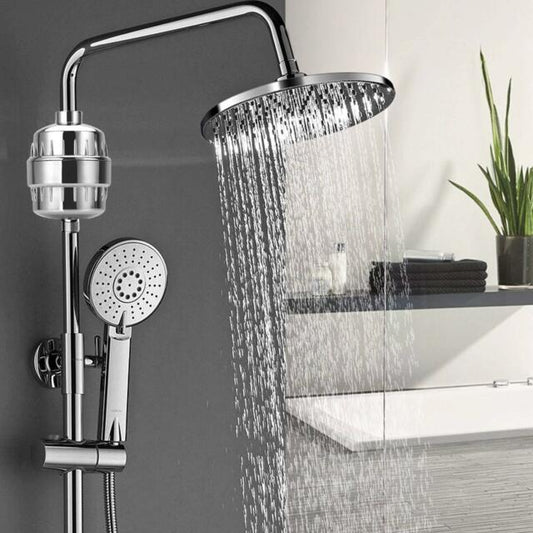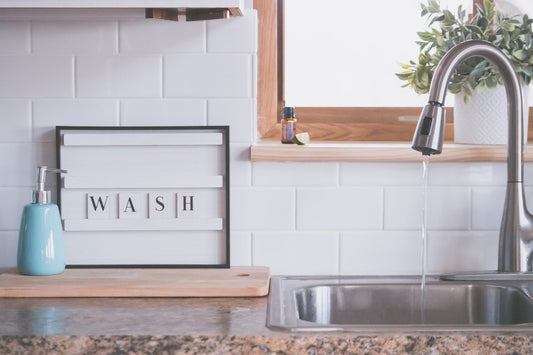Reverse osmosis systems have been gaining popularity within recent years — with some believing that they may be too good to be true. We’re water experts who pride ourselves in delivering the best water to homes and commercial settings alike, so we wanted to take the time to go over common truths and myths. So, is reverse osmosis too good to be true? Let’s jump into the world of reverse osmosis:
What is Reverse Osmosis?
If you’re not exactly sure what reverse osmosis encompasses, you’re not alone. Many people have heard that they’re one of the best water filtration systems — but there’s a lot more to it than that.
Anne Marie Helmenstine, Ph.D., describes the process of reverse osmosis: “Reverse osmosis or RO is a filtration method that is used to remove ions and molecules from a solution by applying pressure to the solution on one side of a semipermeable or selective membrane. Large molecules (solute) can’t cross the membrane, so they remain on one side.” Essentially, reverse osmosis is a highly effective water filtration system that pushes untreated water through a semipermeable membrane. The result is water that is anywhere from 95% to 99% purified.
The Truths About Reverse Osmosis
- It Removes Leads From Water
Lead is incredibly harmful to the human body when consumed. The United States Environmental Protection Agency reports, “The Safe Drinking Water Act (SDWA) has reduced the maximum allowable lead content — that is, content that is considered “lead-free” — to be a weighted average of 0.25 percent calculated across the wetted surfaces of pipes, pipe fittings, plumbing fittings, and fixtures and 0.2 percent for solder and flux.”
Perhaps the most beneficial ‘truth’ about reverse osmosis is that it keeps lead out of our bodies! If you’re living in an area where lead tends to be a problem, we recommend looking into a reverse osmosis system. We need to keep lead out of our bodies to stay healthy. It’s even more important that lead stays out of children’s bodies as it could have detrimental effects.
- It Removes Sodium From Water
Did you even know that there’s sodium in water? That’s right! Sodium can cause heart issues and hypertension, so it’s essential to keep it out of your water. There’s no need for it anyway! RO effectively removes sodium and other particulate matter from your water — making it safer to drink.
- Reverse Osmosis Water is Good For You
While the term ‘reverse osmosis water’ may seem a little strange — like it’s an additive that’s bad for you — scientists agree that reverse osmosis water is good for you! There’s nothing bad about taking out the particulates that could potentially harm your body. Reverse osmosis water is very good for you!
- It’s Powerful Enough to Remove Stubborn Parasites
No one likes to think about parasites in their water — but it’s a harsh reality that we can easily avoid with reverse osmosis water. When water goes through a reverse osmosis system, parasites like Cryptosporidium are eliminated. Stubborn parasites like Cryptosporidium won’t even go away with Chlorine, so it’s quite the relief that reverse osmosis can get those harmful parasites out of our drinking water. Reverse osmosis systems keep the harmful particles out!
- Your Water Will Taste and Smell Better
Water is essential to the health and wellbeing of our bodies, so why not enjoy it? Reverse osmosis filtration systems remove chemicals like Chlorine and Fluoride — which are known to smell and taste quite unpleasant. You’ll truly notice a difference in your drinking water after those chemicals are completely removed! You’ll find yourself enjoying more water because it will actually taste refreshing and pleasant.
Reverse Osmosis Myths
Now, let’s jump into some reverse osmosis myths that we’ve encountered over the years. We’re going to debunk the myths for you so that you can feel more confident about reverse osmosis water:
- It’s Too Expensive
Would you be surprised if we told you that you’d likely save money? Reverse osmosis water systems usually only cost a couple of hundred dollars. While that may seem like a hefty upfront cost, it will end up paying itself off in the long run. Say goodbye to unnecessary single-use plastic water bottles — and start feeling confident about the water you’re drinking at home!
Even the replacement filters are considered inexpensive. Let’s not even get into how much money you could save on possible medical care if you avoid the harmful pollutants in water by using a reverse osmosis water system.
- You Need Special Equipment to Install
That’s right! You don’t need any special equipment to install a reverse osmosis water filter. You’ll only need a pressure gauge to ensure the tank pressure is at the manufacturer’s recommended pressure; this is usually between five to seven PSI. If it’s not between those levels, you’ll need an air pump to increase the PSI until it’s at the manufacturer’s recommendation before installing the reverse osmosis system. It’s an easy and hassle-free process to install one of these systems by yourself.
- My Refrigerator Provides Filtered Water — I Don’t Need an RO
If you receive filtered water from your refrigerator, you should know that the water only runs through one filter (which likely won’t get out all of the nasty pollutants). Your refrigerator filtered water won’t be as purified as water that runs through a reverse osmosis system.
Reverse osmosis systems should be considered for households that have small children, live in an area affected by lead and other harmful pollutants in the pipes, or for those who are health conscious. The machines are relatively low maintenance and long-lasting. We believe that everyone should drink pure water — which is why we offer an affordable 4-Stage Reverse Osmosis System that will create safe drinking water that the whole family will enjoy.






